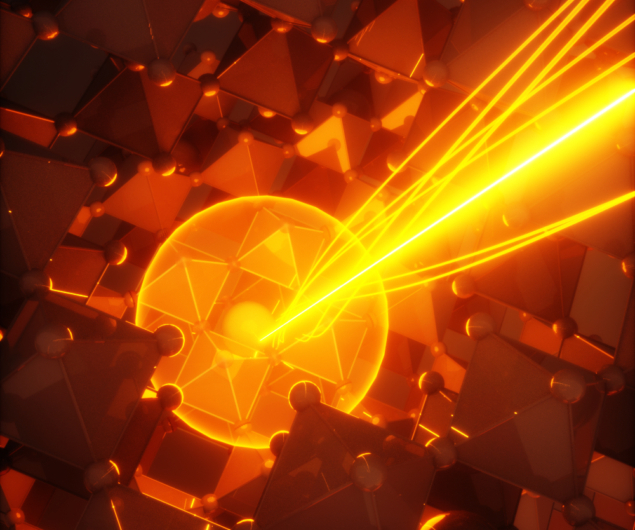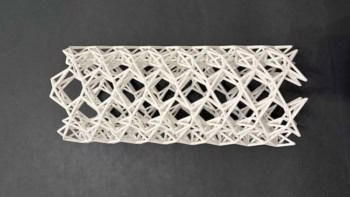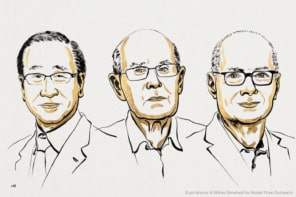
Superfluorescence is a collective quantum phenomenon in which many excited particles emit light coherently in a sudden, intense burst. It is usually only observed at cryogenic temperatures, but researchers in the US and France have now determined how and why superfluorescence occurs at room temperature in a lead halide perovskite. The work could help in the development of materials that host exotic coherent quantum states – like superconductivity, superfluidity or superfluorescence – under ambient conditions, they say.
Superfluorescence and other collective quantum phenomena are rapidly destroyed at temperatures higher than cryogenic ones because of thermal vibrations produced in the crystal lattice. In the system studied in this work, the researchers, led by physicist Kenan Gundogdu of North Carolina State University, found that excitons (bound electron–hole pairs) spontaneously form localized, coherence-preserving domains. “These solitons act like quantum islands,” explains Gundogdu. “Excitons inside these islands remain coherent while those outside rapidly dephase.”
The soliton structure acts as a shield, he adds, protecting its content from thermal disturbances – a behaviour that represents a kind of quantum analogue of “soundproofing” – that is, isolation from vibrations. “Here, coherence is maintained not by external cooling but by intrinsic self-organization,” he says.
Intense, time-delayed bursts of coherent emission
The team, which also includes researchers from Duke University, Boston University and the Institut Polytechnique de Paris, began their experiment by exciting lead halide perovskite samples with intense femtosecond laser pulses to generate a dense population of excitons in the material. Under normal conditions, these excitons recombine and emit light incoherently, but at high enough densities, as was the case here, the researchers observed intense, time-delayed bursts of coherent emission, which is a signature of superfluorescence.
When they analysed how the emission evolved over time, the researchers observed that it fluctuated. Surprisingly, these fluctuations were not random, explains Gundogdu, but were modulated by a well-defined frequency, corresponding to a specific lattice vibrational mode. “This suggested that the coherent excitons that emit superfluorescence come from a region in the lattice in which the lattice modes themselves oscillate in synchrony.”
So how can coherent lattice oscillations arise in a thermally disordered environment? The answer involves polarons, says Gundogdu. These are groups of excitons that locally deform the lattice. “Above a critical excitation density, these polarons self-organize into a soliton, which concentrates energy into specific vibrational modes while suppressing others. This process filters out incoherent lattice motion, allowing a stable collective oscillation to emerge.”

Accidental discovery produces superfluorescent light at room temperature
The new work, which is detailed in Nature, builds on a previous study in which the researchers had observed superfluorescence in perovskites at room temperature – an unexpected result. They suspected that an intrinsic effect was protecting excitons from dephasing – possibly through a quantum analogue of vibration isolation as mentioned – but the mechanism behind this was unclear.
In this latest experiment, the team determined how polarons can self-organize into soliton states, and revealed an unconventional form of superfluorescence where coherence emerges intrinsically inside solitons. This coherence protection mechanism might be extended to other macroscopic quantum phenomena such as superconductivity and superfluidity.
“These effects are foundational for quantum technologies, yet how coherence survives at high temperatures is still unresolved,” Gundogdu tells Physics World. “Our findings provide a new principle that could help close this knowledge gap and guide the design of more robust, high-temperature quantum systems.”



